| Рубрикатор |  |
 |
| Все новости |  |
World News |  |
 |
Central Europe highlights LTE fragmentation
| 08 декабря 2010 |
The danger of fragmentation in first wave LTE mounts with almost every operator announcement, since the early movers are using such a wide range of frequencies.
The first US deployments are all in 700 MHz, but in different parts of the band that currently do not support roaming. The key bands in western Europe will be 2.6 GHz and the digital dividend around 800 MHz, while other operators will be overlaying LTE in 3G bands. Those starting in low frequencies will soon run out of capacity and expand into other bands such as AWS in the US. Now Deutsche Telekom has thrown another option into the mix, with plans to deploy its urban LTE networks in 1.8 GHz.
The German giant is already rolling out LTE for rural broadband in 800 MHz, but will also create metrozones in urban centers where there is a need for high data capacity. It did not give a timescale for this metro build-out, though late 2011 has been whispered. It is only the second carrier to announce plans for 1.8 GHz LTE, following Poland’s Mobyland, and it also holds 2.6 GHz licenses, also well suited to high capacity hotzones, in Germany, following the recent auctions. According to LightReading, the first priority is still rural coverage, as DT has conditions attached to its 800 MHz licenses. It will launch these services under the brand ‘Call & Surf Comfort via Funk’ in 1,000 rural locations by the end of this year, along with a personal hotspot device, made by Huawei, which will use LTE to backhaul several Wi-Fi devices.
Huawei is also working with Mobyland on 1.8 GHz LTE services, though on the infrastructure side. The Polish carrier is a new entrant and is collaborating with another newcomer, CenterNet, to launch LTE in existing 3G spectrum holdings. In this way, the partnership will leap ahead of existing 3G cellcos, which are waiting for upcoming auctions. The two players were both recently acquired by a third small player, Aero2, which has been building an HSPA+ network and also has TD-LTE spectrum. The group will adopt a wholesale model, an approach that will be emulated by two of the four incumbents, PTK Centertel (Orange) and P4 Play. They have gained permission from the regulator to form a joint venture to build a wholesale LTE network and will bid together for 2.6 GHz licenses next year.
Aero2 is also proving a trailblazer in another aspect of LTE, the TDD version. China may have driven the TDD flavour of the standard to support China Mobile, but Aero2 looks set to be the first commercial deployment, with its network going live in early 2011. The operator is using Huawei’s SingleRAN technology, which supports both branches of LTE as well as WiMAX and existing networks.
All this is making Poland a trailblazer for many key trends in LTE deployment models. Mobyland has the edge in timing, though not in branding or industry relationships. It has announced its first device, a USB dongle from IPWireless, best known for its TDD technologies - TD-CDMA and mobile TV platform IMB. The firm has created the devices specifically for Mobyland’s unusual band, indicating the problems of scale in a fragmented market, but also the opportunities that this opens up for smaller suppliers. The IPWireless dongle uses chips from Altair Semiconductor, a specialist in WiMAX device silicon which has expanded into LTE.
The US will also see fragmentation, because most of its carriers will be forced to deploy LTE in several different bands once they start to need more capacity, and in different parts of the same band. One of Verizon’s issues will be the small amount of capacity in its initial LTE band, 700 MHz, which will drive it to multiband roll-out fairly quickly. And it is sharing the 700MHz digital dividend spectrum with a patchwork of other carriers, whose own LTE efforts will be in different parts of the band, with consequent roaming challenges.
AT&T is the other major 700 MHz holder, of course, but although it has brought forward its LTE roll-out, it will not go live for another year. But there are many other holders of 700 MHz licenses, from the auctions of early 2008 and earlier allocations. These earlier transactions mean there are many small holders of localized 700 MHz spectrum, some of which are already deploying services, often using a variant of WiMAX, and others likely to lease or sell to larger players. These deals may allow the major operators to supplement their holdings as their capacity runs out, depending on where in the band the licenses sit.
AT&T is already eyeing such an opportunity, according to reports, and it certainly has the weakest spectrum position for 4G among the big three cellcos. It has only 12 MHz in the 700 MHz band, compared to Verizon’s 22 MHz (and of course, Sprint rides on a Clearwire network with over 100MHz in most markets). The biggest winner of that first round of 700 MHz was Qualcomm, which used it to build its MediaFLO mobile TV network as a white label service for carriers. However, it recently confirmed plans to wind down that business and is likely to sell its holdings, with AT&T rumored to be in talks. AT&T could theoretically take over the FLO TV network, which it uses for its own mobile broadcast offerings, but is more likely to use the licenses to boost its store of spectrum for mobile broadband. The licenses are considered to be worth more than the $683m Qualcomm paid for them between 2003 and 2008.
However, Qualcomm’s spectrum may have limited uses for AT&T, unless it does decide to keep FLO running. The D and E Block licenses held by the CDMA giant are good for mobile TV, but they run in 6 MHz unpaired channels - that means TDD technology, not the FD-LTE that AT&T will use in the rest of its 700 MHz spectrum; and even if it decided to run TD-LTE or WiMAX, 6MHz would hardly support interesting services. The only carrier serious about running 4G technology in such narrow channels is MetroPCS, but that is for a very different business model from AT&T’s, requiring lower tariffs and quality of service - and since MetroPCS did not implement 3G, in effect it is using LTE to achieve 3G-level offerings.
Источник: 4G Trends
Читайте также:
Опубликован перечень поручений по итогам заседания Совета по стратегическому развитию и нацпроектам
Сингапур готовится к отключению связи 3G
Решения N3COM прошли тестирование на сети LTE ОАО «РЖД»
МТС начинает отключать старые сети 3G
билайн завершил масштабную модернизацию сети в Московской области
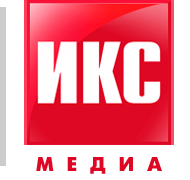





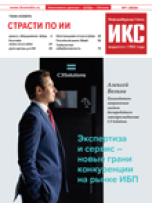

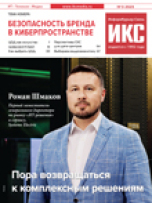
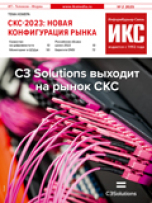

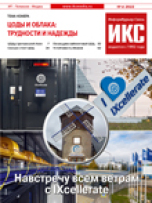


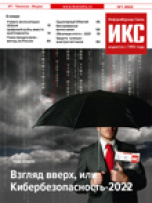
Оставить свой комментарий:
Комментарии по материалу
Данный материал еще не комментировался.